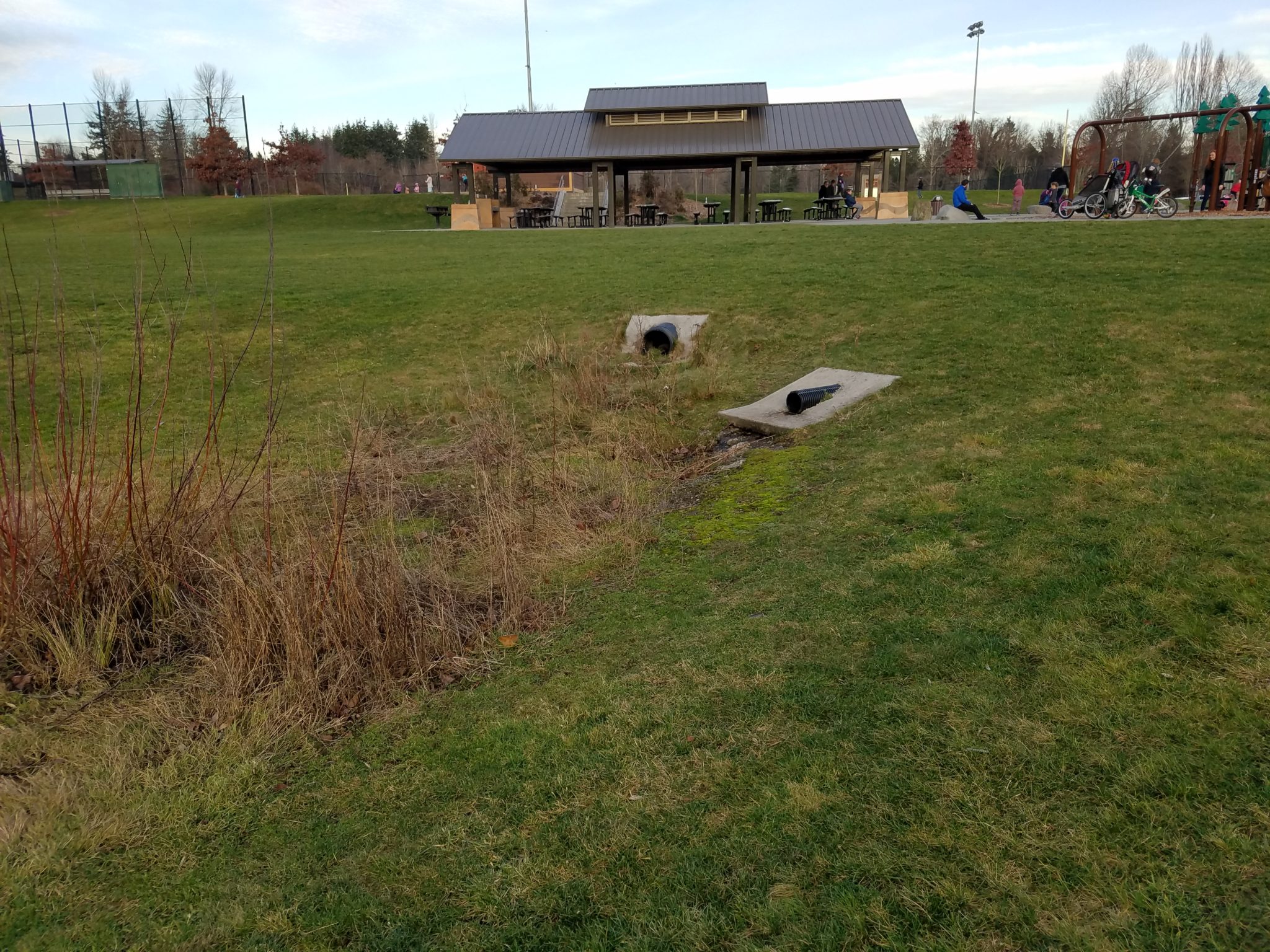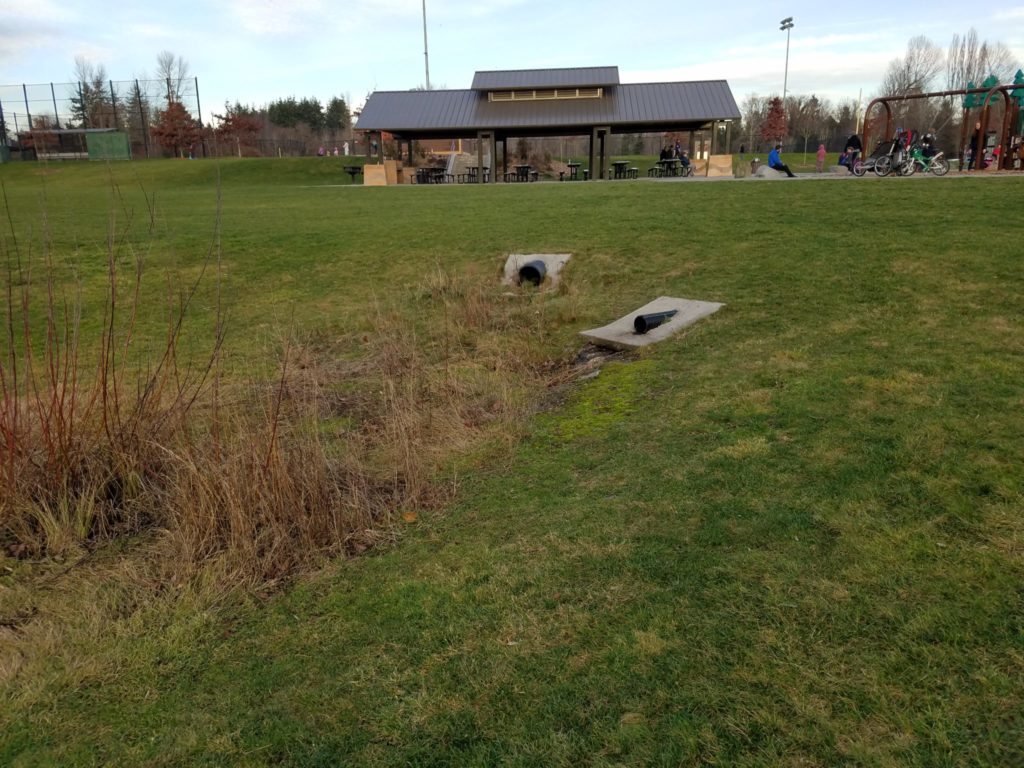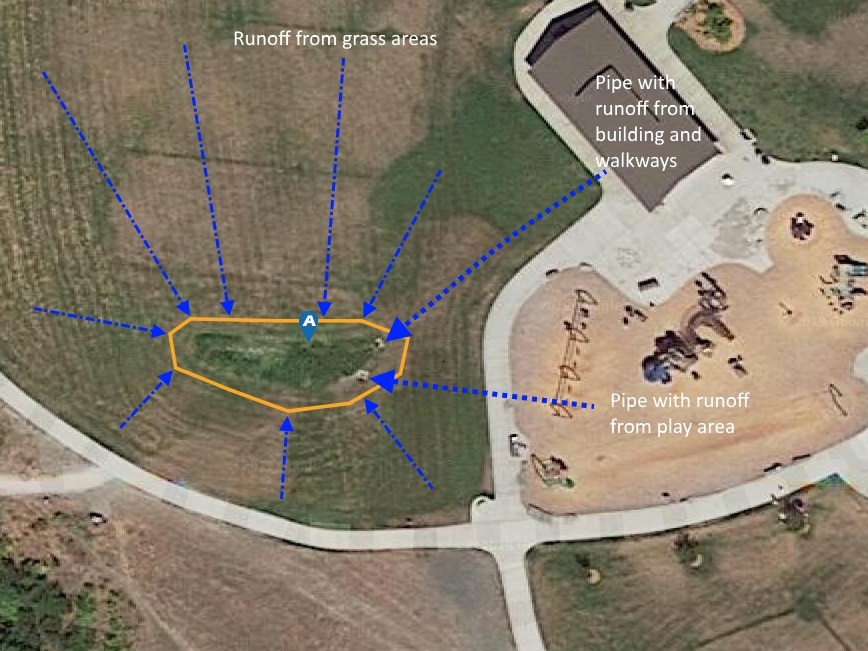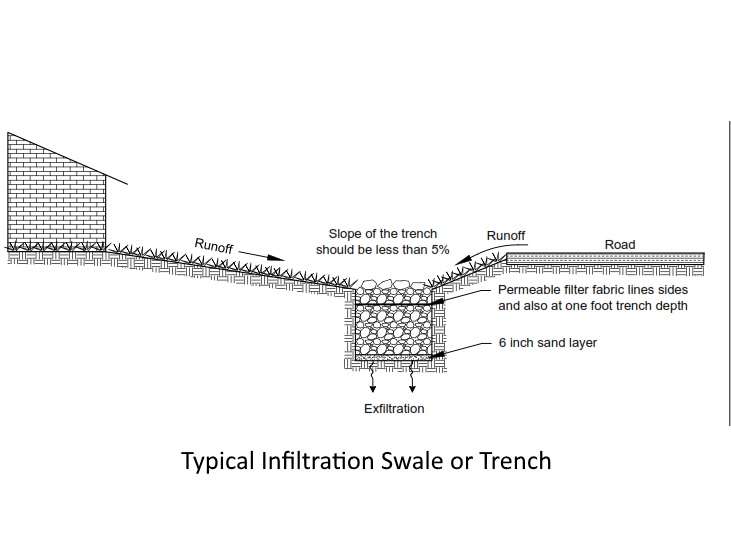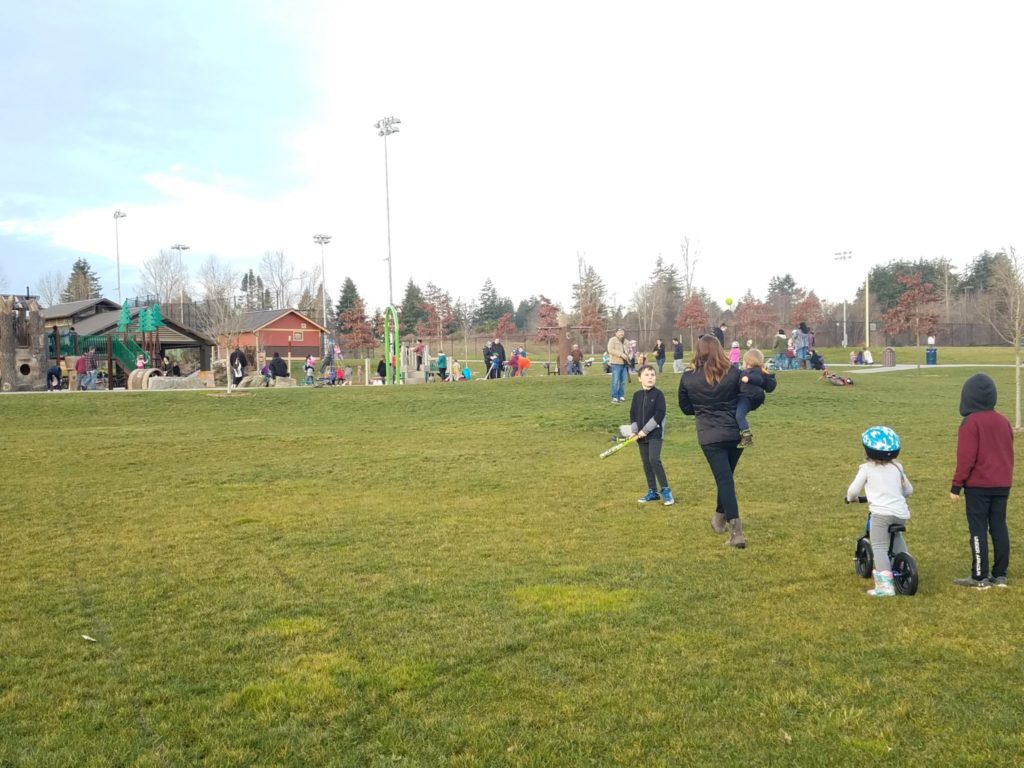Where is this located? It is downhill of the picnic building near the play structure.
What’s special about this place? The park at Squalicum Creek is a highly contoured area taking advantage of terrain to define and direct the stormwater to flow certain directions. It mimics the work of nature. The playground has drains underneath it that collect all the runoff water which is then piped to these infiltration basins where the water seeps into the ground.
image gallery
select any photo to see a slideshow
